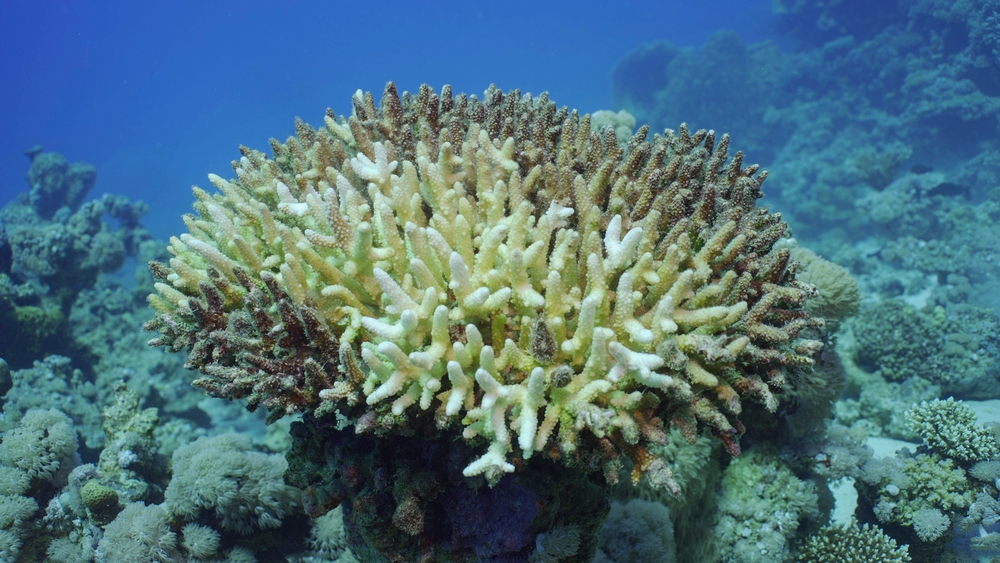Charting the Course: A Comprehensive Exploration of Conservation Challenges
Setting the Stage: The Annual Horizon Scan as a Guiding Light

In the ever-evolving tapestry of ecological intricacies, the Cambridge Conservation Initiative has been a vanguard, leading the charge in deciphering the multifaceted challenges that confront our planet’s biodiversity. For over a decade, the annual horizon scan has served as a guiding light, illuminating the path ahead by predicting the imminent threats, transformative changes, and groundbreaking technologies that will wield the most significant impact on biological conservation. The latest edition, the 15th horizon scan, witnessed the convergence of a diverse assembly of 31 scientists, practitioners, and policymakers. Their collaborative efforts culminated in a comprehensive list of 96 issues, a rich mosaic of ecological concerns spanning sustainable energy, declining invertebrate populations, and the metamorphosis of marine ecosystems.
An In-Depth Exploration: Unveiling the 15 Most Pressing Issues
- New Frontiers in Hydrogen Production: The horizon scan opens with a spotlight on new sources of hydrogen for energy production, including the revolutionary concept of seawater electrolysis.
- Decarbonized Ammonia Production: A paradigm shift is explored in ammonia production for fertilizer and fuel, involving water microdroplets, graphite mesh, and nitrogen.
- Fish-Like Nutrients for Food Production: An innovative approach to making food and animal feed surfaces, utilizing fish-like nutrients derived from autotrophic hydrogen-oxidizing bacteria.
- Revolutionizing Agriculture in Urban Environments: The scan delves into the realm of indoor agriculture in urban environments, propelled by light-free artificial photosynthesis.
- Rock Dusts and Their Ecological Implications: Concerns arise about the excessive use of rock dusts to remineralize carbon, potentially putting ecosystems at risk for heavy metal contamination.
- Declining Earthworm Populations: A delicate balance in ecosystems is explored as earthworm populations continue to decline, especially in farmland and broadleaved woodland areas, potentially due to pesticide use.
- Soil Ecoacoustics as a Monitoring Tool: An exploration of the emerging field of soil ecoacoustics, projecting sounds like water moving through soil, poised to help monitor soil ecology and invertebrate populations.
- Wildfires’ Impact on Climate Patterns: The intricate relationship between wildfires and climate patterns, akin to phenomena like El Niño, is unveiled as wildfires release trapped aerosols.
- Advancements in Benchtop DNA Printers: As benchtop DNA printers become increasingly advanced and widespread, concerns about regulation and their potential impacts take center stage.
- Proactive Chemical Toxicity Measurement: The horizon scan highlights new methods to measure a chemical’s toxicity before adverse impacts surface, marking a crucial stride in proactive conservation efforts.
- Urban Development Impact on Migratory Birds: The delicate balance between sustainability and environmental impact is explored in the context of Saudi Arabia’s planned “sustainable” ultra-tall skyscraper city, predicted to impact migratory birds.
- Rapid Decline of Sea Urchins: An alarming trend is identified as sea urchins continue to die off rapidly worldwide, potentially due to a protist pathogen, raising concerns about the threat to tropical ecosystems.
- Testing Methods for Ocean Carbon Dioxide Removal: Various methods to remove carbon dioxide from the ocean, including ocean fertilization, macroalgae, and rock injections, undergo testing for their efficacy.
- Twilight Zone Temperature Rise and Its Implications: Rising temperatures in the twilight zone are projected to disturb the ocean’s biological carbon pump, highlighting the interconnectedness of climate variables.
- Antarctic Ice Melting and Ocean Current Alterations: The ramifications of melting Antarctic ice take center stage, with predictions of alterations to deep-sea ocean currents, reducing abyssal overturning by 40% by 2050.
Synthesis and Reflection: Toward a Sustainable Future
In the reflection and synthesis of these diverse challenges, the researchers, led by esteemed conservationist William Sutherland of Cambridge University, discern a common thread—the juxtaposition between anthropogenic impacts on biodiversity and the increasing technological capacity to mitigate these impacts. The issues identified in this horizon scan not only signify the complexity of our ecological challenges but also highlight the dynamic relationship between environmental threats and innovative solutions.
The authors emphasize the significance of recent marine policy initiatives in addressing threats to marine ecosystems while acknowledging that these endeavors may not fully resolve the climate-related challenges identified. The discussion extends to the vital role of innovation in carbon capture and sustainable energy technologies, underscoring the continual need for transformative solutions to safeguard our planet’s future.

Acknowledging Collaborative Endeavors and Future Avenues
Supported by funding from The Pew Charitable Trusts, the Natural Environment Research Council, and the Royal Society for the Protection of Birds, this research illuminates the collaborative spirit and cross-disciplinary efforts required to navigate the intricate web of conservation challenges. As we navigate this evolving landscape, the horizon scan serves as a compass, guiding us toward a future where ecological harmony and human progress coalesce. The journey is challenging, but with collective dedication and innovative solutions, we can steer our course toward a sustainable and resilient planet for generations to come.
Conclusion: Forging Ahead with Purpose and Resolve
As we conclude this extensive exploration of the 15 most pressing conservation challenges, it is evident that our journey toward a sustainable future is fraught with complexities. The intricate dance between human activities and ecological responses necessitates a harmonious approach, where innovation and conservation converge. The horizon scan not only unveils the challenges but also beckons us to forge ahead with purpose and resolve.
In the face of declining invertebrate populations, changing marine ecosystems, and the myriad challenges outlined, our collective responsibility becomes even more paramount. It is not merely a matter of navigating the intricacies of each issue but understanding the interconnectedness that defines our planet’s delicate balance.
The collaborative efforts showcased in this research, supported by visionary funding entities, underscore the importance of interdisciplinary endeavors. As we stand at the crossroads of technological advancement and ecological conservation, the roadmap ahead demands a blend of ingenuity, policy interventions, and unwavering commitment.
In the grand tapestry of conservation challenges, each identified issue is a call to action. It is an invitation to researchers, policymakers, and citizens alike to contribute to the ongoing dialogue, seek innovative solutions, and champion the cause of a resilient and sustainable planet. The horizon scan is not just a snapshot of challenges; it is a compass guiding us toward a future where our ecological footprint is balanced by our commitment to preserving the wonders of our natural world. The journey continues, and our collective resolve will determine the trajectory of our shared environmental legacy.
Related Content:
- Green Cities of Tomorrow: Innovations in Urban Sustainability
- In the race to scale up carbon storage, Climeworks’ new facilities in Iceland and Scotland lead the way.
- Turns Out Undersea Kelp Forests Are Crucial to Salmon – Scientific American
- Rapid diversification of a free-living protist is driven by adaptation to climate and habitat
